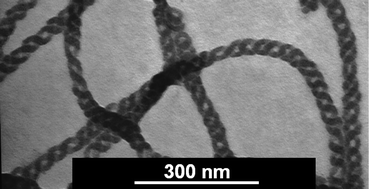We recently reported an accidental discovery that a linear triblock terpolymer, poly(butyl methacrylate)-block-poly(2-cinnamoyloxyethyl methacrylate)-block-poly(tert-butyl acrylate) (B350C160T160, with the subscripts denoting the numbers of repeat units for the different blocks), self-assembled into double, and sometimes triple, helices in three binary solvent mixtures that were marginal for the B350 block, poor for the C160 block, and good for the T160 block. We show in this paper that double helices were formed as a self-assembly product from B350C160T160 in another three solvent mixtures. Also, a triple-stranded superstructure bearing helical sections was prepared from a new BnCmTl sample, which was B240C120T120. In addition, we have replaced some of the cinnamoyl groups of the C120 block with three types of chiral groups. Multi-stranded superstructures bearing helical sections were produced in every case when the solvents met the special solvation conditions. The partial or full hydrolysis of the T160 and T120 blocks of the two terpolymers yielded acrylic acid bearing blocks and represented the largest structural change from the original terpolymers. Interestingly, these polymers formed helices as well. These helices were double-stranded and had regular pitch lengths. These new results suggest that the use of the special solvation conditions may represent a general paradigm for the production of helices from different triblock terpolymers.

You have access to this article
 Please wait while we load your content...
Something went wrong. Try again?
Please wait while we load your content...
Something went wrong. Try again?


 Please wait while we load your content...
Please wait while we load your content...